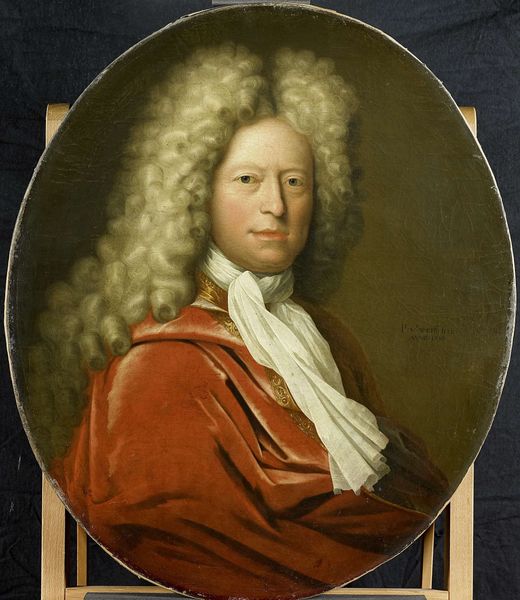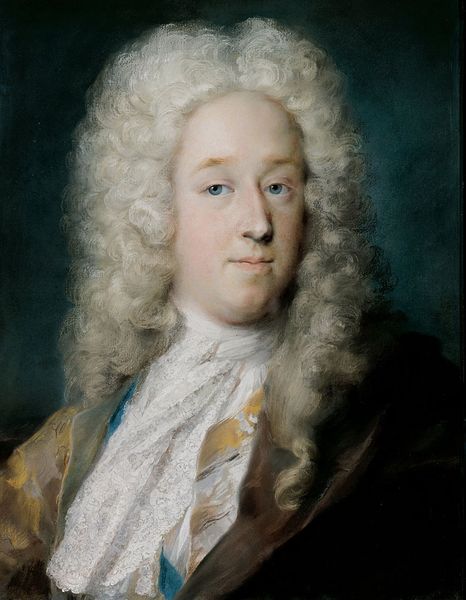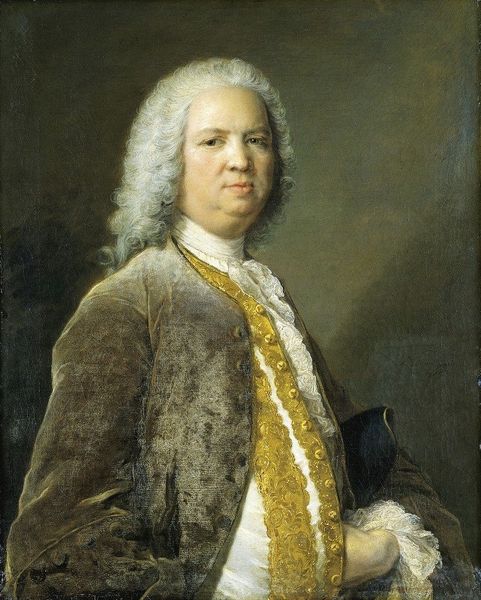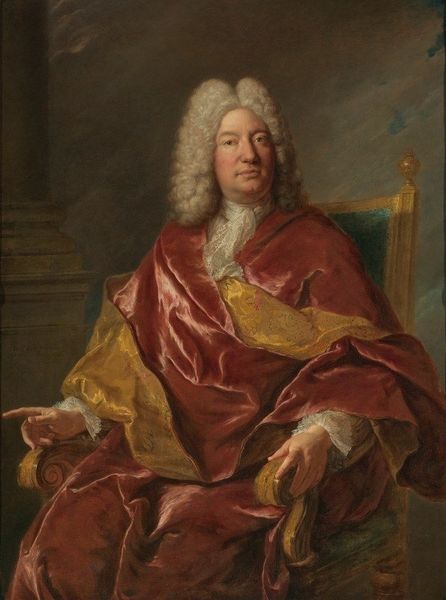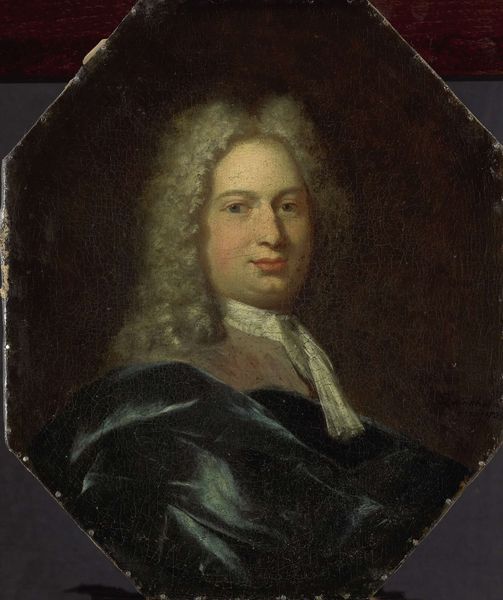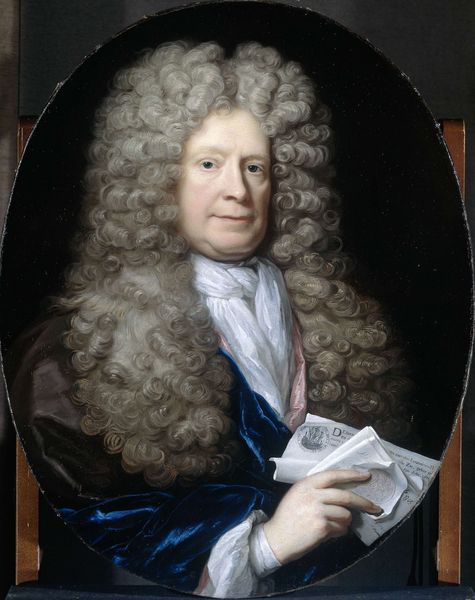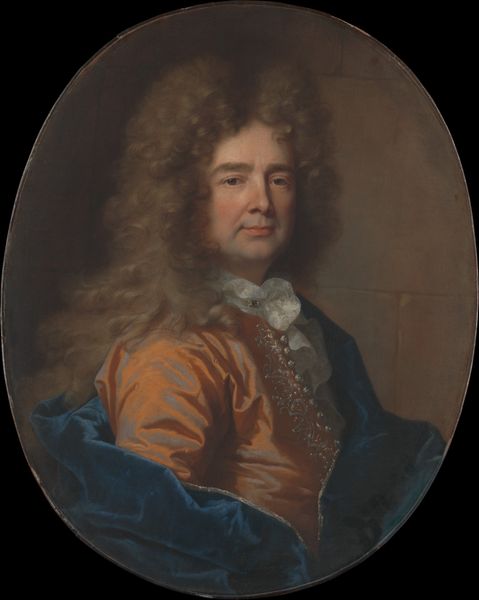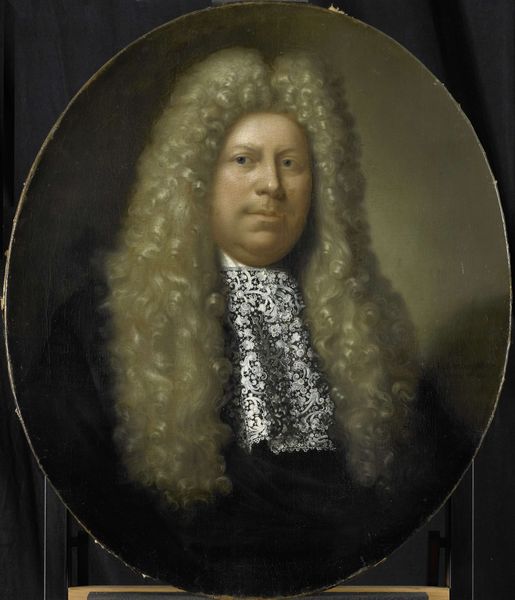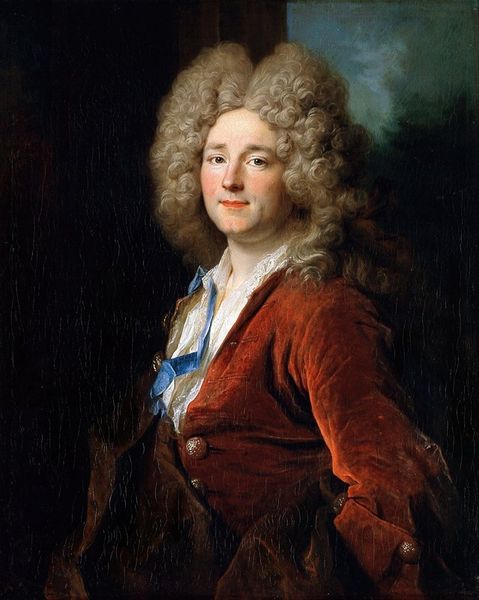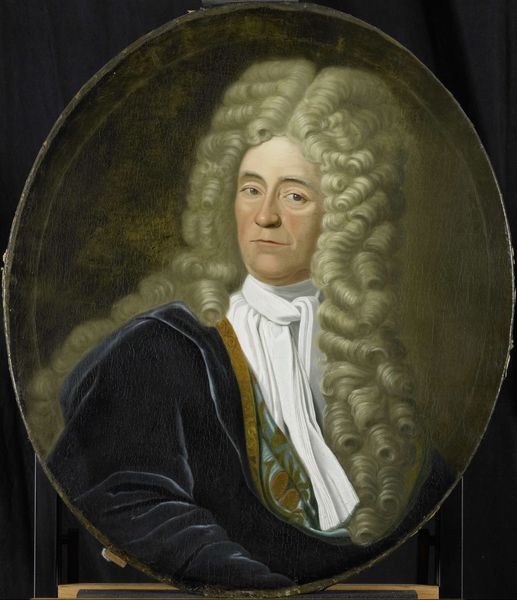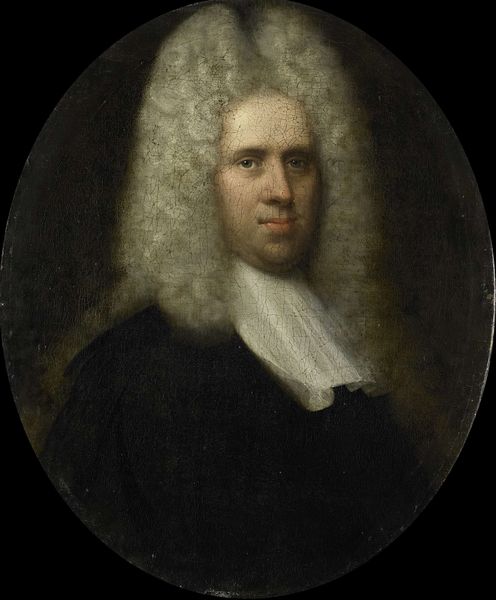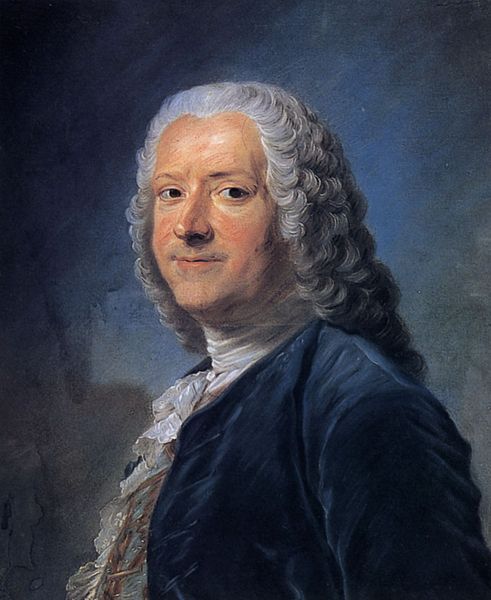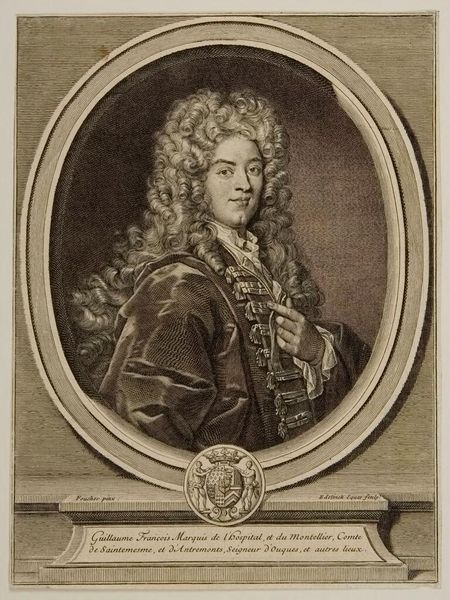
painting, oil-paint
#
portrait
#
baroque
#
painting
#
oil-paint
#
history-painting
#
portrait art
Copyright: Public Domain: Artvee
Curator: Let's examine this remarkable portrait. It’s Nicolas de Largillière's depiction of Frederick Augustus, Count Rutowski, dating back to about 1729. Largillière, of course, was a leading portraitist of the French Baroque. Editor: Immediately, I’m struck by the contrast—the stark, almost powdered wig against the softness of his face, those very pink cheeks, the rich blue of the drapery. There's a sense of contained opulence, but almost bordering on… vulnerability? Curator: Vulnerability is interesting. Certainly, portraits like this were powerful tools in crafting and conveying social status and power. Count Rutowski was a prominent figure, the illegitimate son of Augustus the Strong, King of Poland and Elector of Saxony. This portrait would have functioned, in part, to legitimise and visually broadcast his place in the upper echelons of society. Editor: Precisely, and yet the vulnerability I sense, is perhaps a critique of that constructed image. We see a man overwhelmed by the performativity of nobility. Think about the social constraints he was placed under, given his parentage, to constantly perform. Curator: It's certainly a compelling reading. It's easy to focus on the splendor, the masterful rendering of fabric, the lifelike quality Largillière achieves. It speaks to the patronage system as well, where artistic production was deeply interwoven with political and social currents. Portraits were not just records; they were statements. Editor: Yes, these visual records serve more than surface appearances; these details of history-painting invite critical reflections on representation itself and on our perceptions of power, then and now. By focusing on the systemic and historic ways that societal roles get prescribed or assumed we can see how potent images like these, that convey power but can also highlight inherent systemic problems, invite complex questions for social justice, race, gender, ability, or even political and cultural affiliation. Curator: You bring up an interesting question. In examining Largillière’s portrait, we inevitably consider the intersection of artistry and power. Editor: A potent reminder of the roles we play, and the systems that enforce them. Curator: Indeed, it pushes us to reconsider our place in these roles.
Comments
No comments
Be the first to comment and join the conversation on the ultimate creative platform.
